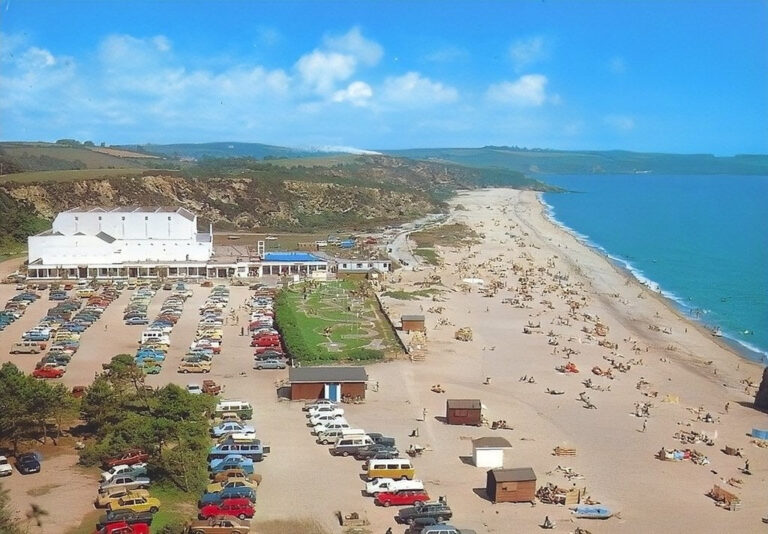In 1939, Butlins launched its first hotel at the Skegness holiday camp. Nearly a decade later, in June 1948, the second Butlins hotel opened at the Ayr camp. The Butlins Heads of Ayr Hotel, located on the main road near the camp entrance, featured 74 bedrooms and quickly became a landmark for holidaymakers.
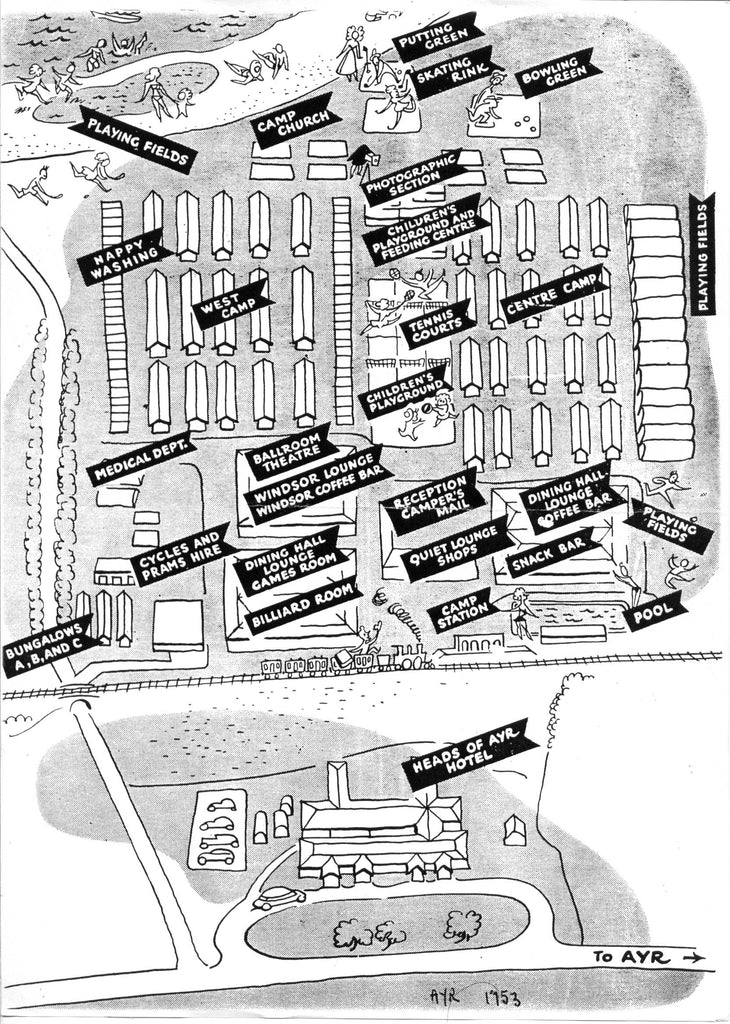
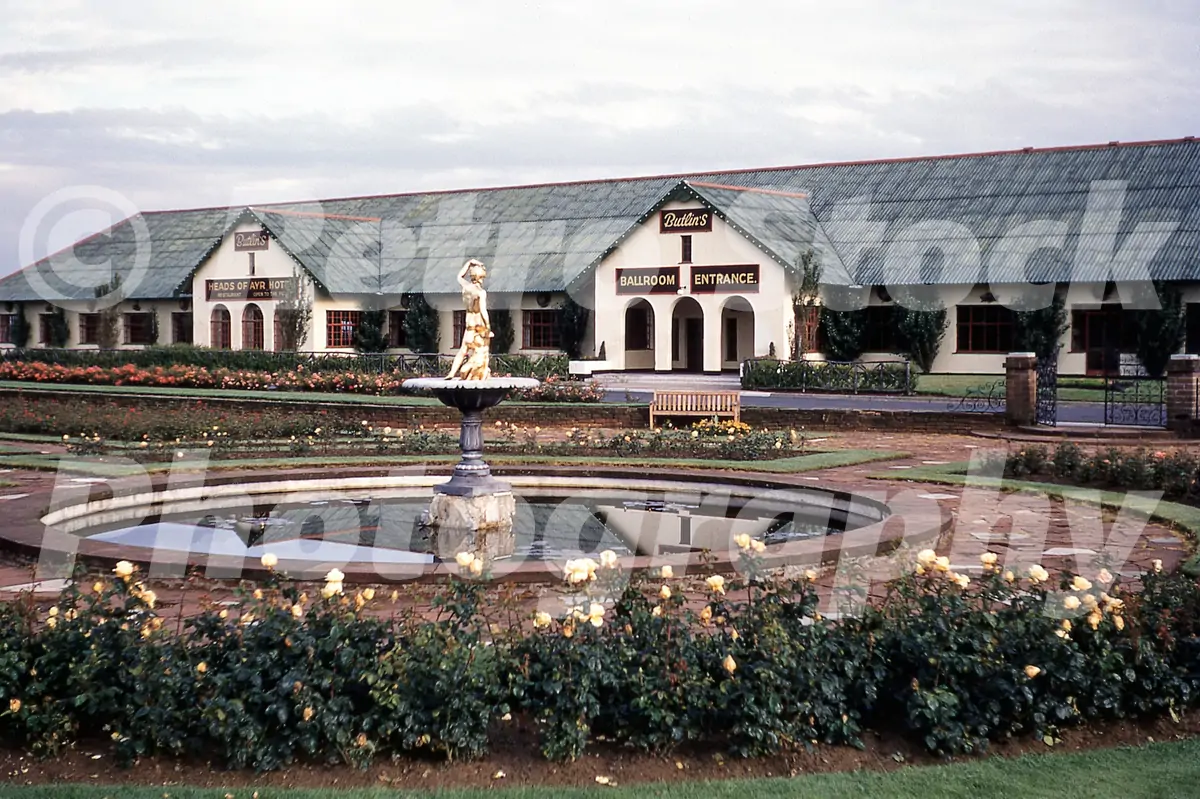
The building was actually constructed during the war as part of the naval depot which previously occupied the site. After the war it was repurposed and rebuilt as a hotel, but due to post-war shortages most of the material used for the conversion came from other buildings on site which were being demolished. The cocktail bar and most of the ornate interior woodwork came from scrapped ships.

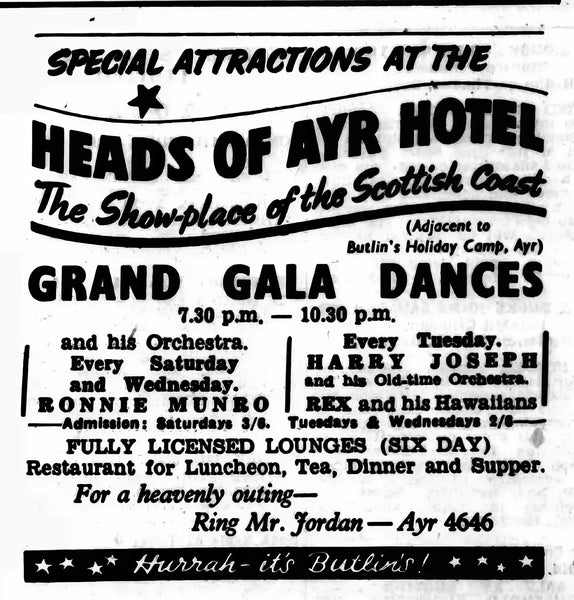
Advertised as ‘The Show-Place of the Scottish Coast’ the Heads of Ayr Hotel had its own bar and restaurant along with a large ballroom. During the early years it hosted dancing six nights a week. The ballroom also became popular for large gatherings and conferences and 600 people could sit down for dinner.
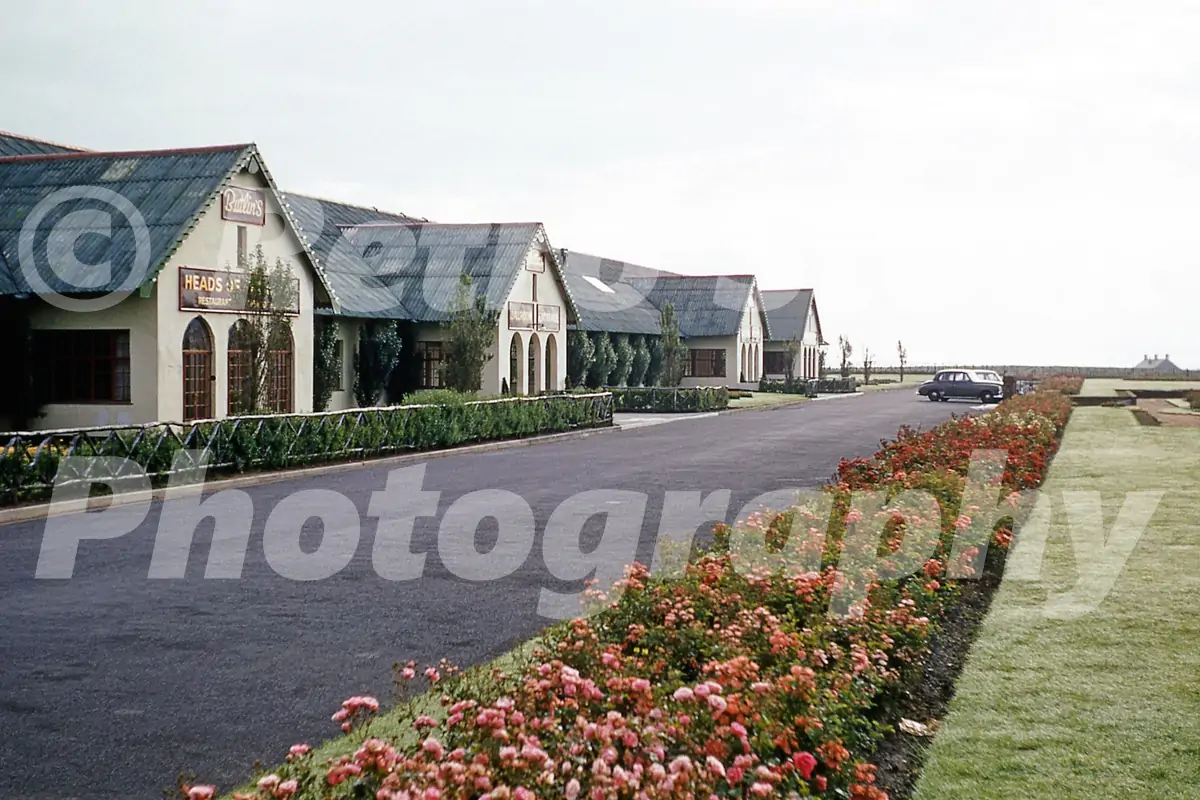
The hotel was designed for those who didn’t want to stay for an entire week, as the camp only allowed bookings for seven days. Additionally, the hotel served a practical function as a place where day visitors to the camp could purchase drinks, thanks to its regular pub license. Both day visitors and hotel guests were not technically allowed to buy drinks within the camp itself due to its club license. A rule that was regularly broken.
In 1951 the US Air Force had 31 rooms reserved exclusively for American military personnel traveling to and from Prestwick airport.
Trouble at the Butlins Heads of Ayr Hotel
Unfortunately the hotel soon gained a reputation for trouble. Just a year after opening a large drunken brawl saw tables and chairs being thrown, windows smashed and barmaids “sheltering below the counter”. It became a popular destination for coach loads of young people traveling down from Glasgow.
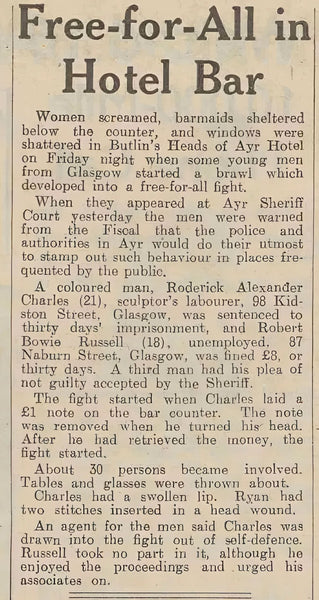
The deputy chief constable of Ayrshire later stated that “hardly a day went by without someone appearing at Ayr sheriff court on some charge or other resulting from an incident at the hotel”.
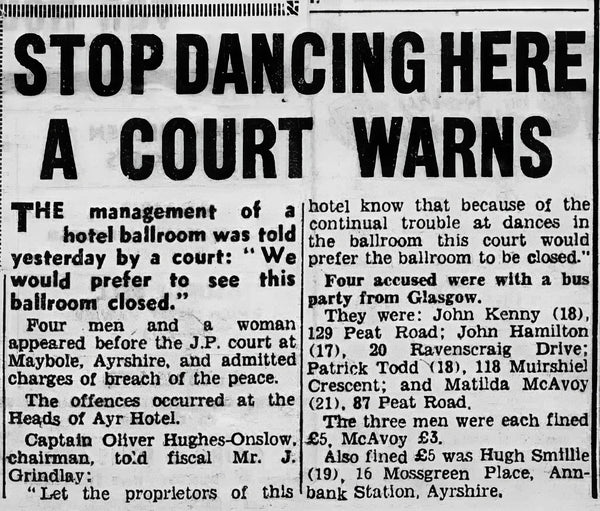
Numerous other incidents occurred and in 1958, just ten years after it opened, Butlins gave up and closed the hotel. The alcohol license was voluntarily surrendered. They didn’t want to admit the real reason behind the closure so they issued a strange statement about it closing because of the “enormous success” of the holiday camp….
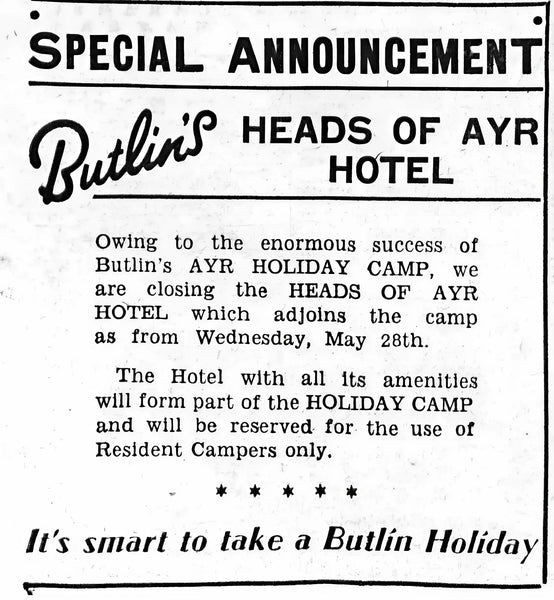
The building was then incorporated into the camp, with the hotel bar remaining closed. The hotel rooms were repurposed for staff accommodation, and the ballroom continued to host dinners and other large gatherings, albeit without alcohol. It became a popular venue for kids events. In 1959, a chairlift was built connecting the building to the rest of the camp.
In 1968, Butlins applied to reinstate the alcohol license, arguing that 36,000 annual day visitors could not buy alcohol in the camp due to the club license. Butlins had no interest in reopening it as a hotel but only wanted to reopen the bar for day visitors. Despite police objections and concerns about increased “weapon-carrying hooligans,” the license was reinstated.
But the hotel didn’t last much longer and it was demolished in the 1970s The chairlift remained in use until 1998.
The Skegness hotel was more successful and remained open until 1974 when it too was closed and merged with the rest of the camp.

